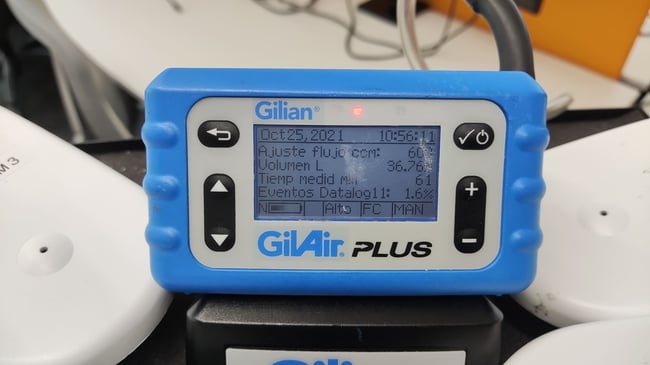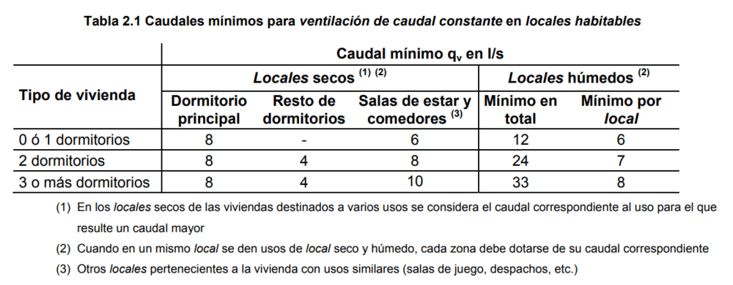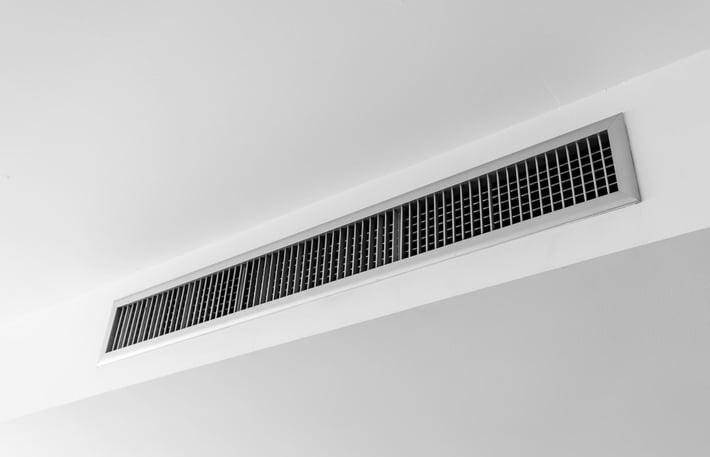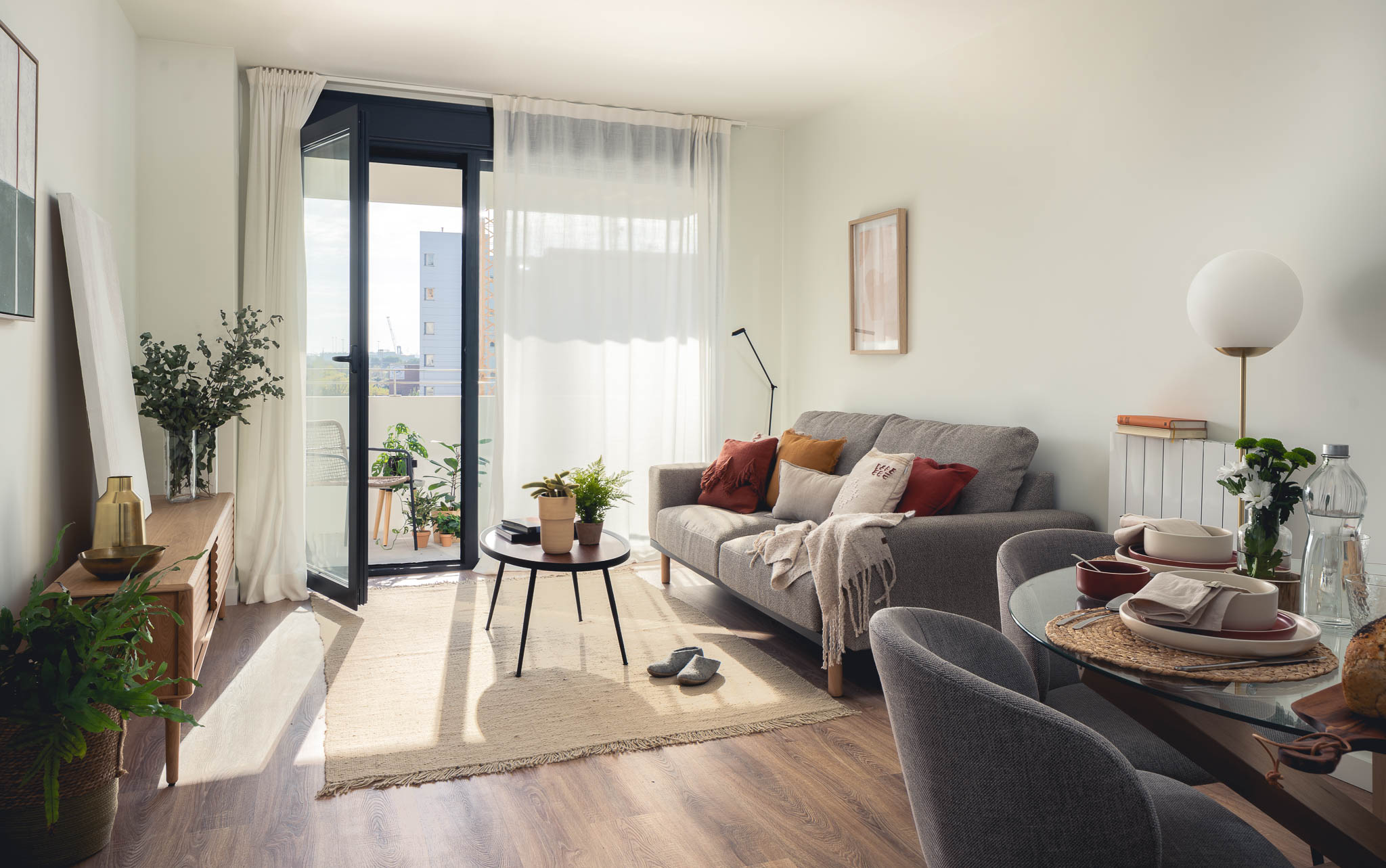Indoor air quality in a dwelling has a direct impact on the health of the occupants due to prolonged exposure and use. In order to guarantee the habitability of dwellings in Spain and the health of their occupants, the Technical Building Code (CTE) is applied, which is the regulatory framework that establishes the basic quality requirements that buildings must meet and that determine what an nZEB building should be like.
The Technical Building Code consists of several documents, which can be recognised, basic, or support documents, along with application guides. One of the basic documents of the Technical Building Code is the Basic Document on Salubrity (DB HS).
The CTE salubrity establishes rules and procedures to guarantee the basic requirement of “Hygiene, health, and environmental protection” in buildings. Its objective is to limit health risks for residents and prevent the risk of buildings deteriorating and deteriorating the environment in their immediate surroundings.

Intelligent air sampling pump
Basic requirements of the CTE
The CTE salubrity consists of six sections (HS1 - HS6) that address essential aspects for the salubrity of buildings and are mandatory. These sections are:
- Protection against damp (HS 1): includes requirements for adequate waterproofing of construction elements exposed to water to prevent problems of salubrity due to dampness, such as roof slopes and construction details of walls and sills.
- Waste collection and disposal (HS 2): buildings generate a large amount of waste during their life cycle, and it is important to manage this waste at each stage. Processes must be established to separate, transport, and dispose of waste in a sanitary and environmentally appropriate manner.
- Indoor air quality (HS 3): This section is developed in depth below.
- Water supply (HS 4): refers to the design of the drinking water supply facility so that it is fit for consumption and also sustainable.
- Water drainage (HS 5): dictates how the building should be constructed for the proper disposal of wastewater, rainwater and runoff.
- Protection against exposure to radon (HS 6): aims to reduce the risk of exposure to radon gas from the same soil in indoor spaces. This is a section added to the basic document (DB HS) at the end of 2019.
HS 3, on indoor air quality
The third basic requirement of the CTE Salubrity, Indoor air quality (HS 3), is directly related to human health. It is therefore important to follow clear and effective regulations to protect it.
In order to guarantee good indoor air quality in residential buildings, the CTE Salubrity states that the established minimum ventilation flow rates must be respected. In this way, it is ensured that the concentration of particulate CO2 does not exceed the permitted limits and the accumulation of other pollutants harmful to human health is prevented. The following table shows the minimum flow rates indicated by one of the methods determined by CTE Salubrity to ensure indoor air quality, taking into account the different rooms of a dwelling and its number of occupants:

Table with minimum flow rates in habitable rooms. Source: Basic Document of Salubrity of the CTE
To ensure these minimum ventilation rates, the CTE salubrity dictates that the dwelling must have a ventilation system, which can be hybrid or mechanical. Thus, each room must be ventilated with outdoor air. Likewise, during periods of non-occupancy, it is essential that the supply of outdoor air is sufficient to eliminate contaminants not related to human presence.
The standard also includes the design of an air circulation system that ensures a balanced distribution of ventilation in all areas of the dwelling. Air must circulate from dry areas, such as bedrooms and the living room, to humid areas, such as the kitchen and bathroom, where air extraction takes place. In order for air circulation to be possible, passage openings must be installed between rooms with intake and rooms with exhaust.
The regulations also size the section of the ventilation ducts, which depend on the ventilation flow rate and whether the ventilation is hybrid or mechanical.

Ventilation element in a dwelling
Impact on energy efficiency
The HS 3 section of the CTE on salubrity is important not only for its impact on air quality but also for the comfort and energy efficiency of the dwelling. Air renewal helps to maintain an optimal indoor temperature, provided that the right balance is achieved between ventilation and the prevention of unnecessary heat loss.
The document has been updated to comply with the new European Near Zero Consumption Directive, which has resulted in changes to the minimum requirements for air supply in habitable premises.
How it affects sustainability certifications
The sustainability certifications, such as LEED, BREEAM, WELL and DGNB, assess the sustainability of buildings in various aspects, including section H3 of the Basic Document HS 3 of the CTE on Salubrity. These certifications consider not only air pollution from the building use, but also the pollutants produced or emitted by the materials used to construct it. The multifamily housing building Vila Bonaplata, managed by Bialto, is a clear example of a green building that meets the objective of minimising its environmental impact throughout its life cycle.
On the other hand, some sustainable certifications encourage the installation of CO2 detection sensors to measure indoor air quality and adjust ventilation accordingly. They also promote the use of efficient mechanical ventilation systems and the implementation of proper maintenance practices to ensure good indoor air quality and a high level of comfort for tenants.
In conclusion, at Zero Consulting we believe that the ventilation of buildings is essential to ensure the air quality inside and, therefore, the comfort and well-being of their occupants. Living and breathing in a clean environment benefits the health of the resident, hence its importance. However, it is crucial to find a balance between ventilation and energy consumption, by avoiding excess which can lead to higher energy consumption.


